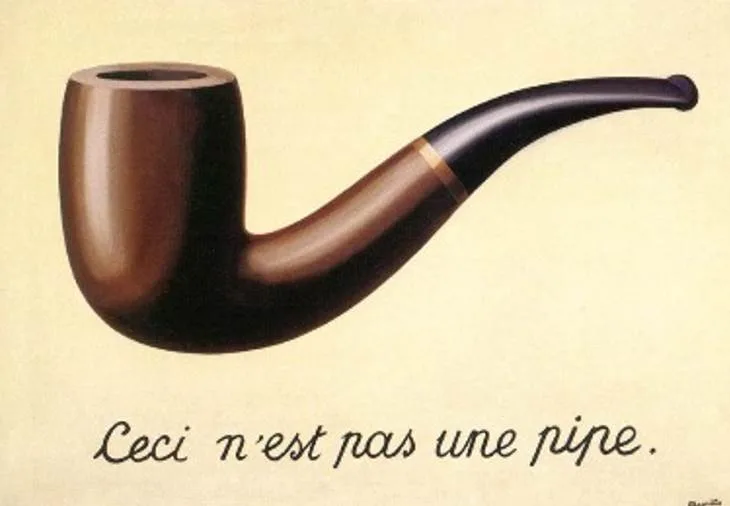The Los Angeles County Museum of Art or LACMA is one of the most popular museums in Los Angeles, California.
It’s located on Wilshire Boulevard, one of the main thoroughfares in the city, in the Miracle Mile District in the northwestern part of the city.
The museum has a history that goes back to the year 1910 as part of the Los Angeles Museum of History, Science, and Art, located in Exposition Park.
The museum split in 1961 to form the LACMA, a museum with an extremely diverse collection of art of over 150,000 objects.
The collection spans from ancient to modern times and was produced all around the world. Additionally, the museum also hosts temporary art exhibitions.
The museum has been expanded several times throughout its history, including new buildings designed by architect Renzo Piano in the early 21st century. He also worked on the Centre Pompidou in Paris in the 1970s.
Today, the museum is one of the most popular museums in the Western part of the United States with over 1.5 million yearly visitors.
Below, you’ll find some of the highlights of the painting collection of the Los Angeles County Museum of Art.
1. The Cotton Pickers – Winslow Homer
- Date created: 1876
- Dimensions: 61.12 × 96.84 centimeters (24.06 × 38.13 inches)
The Cotton Pickers is a painting by American artist Winslow Homer (1836-1910). He is considered to be one of the most renowned landscape painters of the 19th century. His realistic depictions of common subjects really shine through in this remarkable work of art.

Homer used brown colors to depict the slave-like labor conducted by two African-American women who are picking cotton on a field. This work was inspired by the Realism paintings of some of the most renowned Realism artists in Europe such as Jean-François Millet and Gustave Courbet.
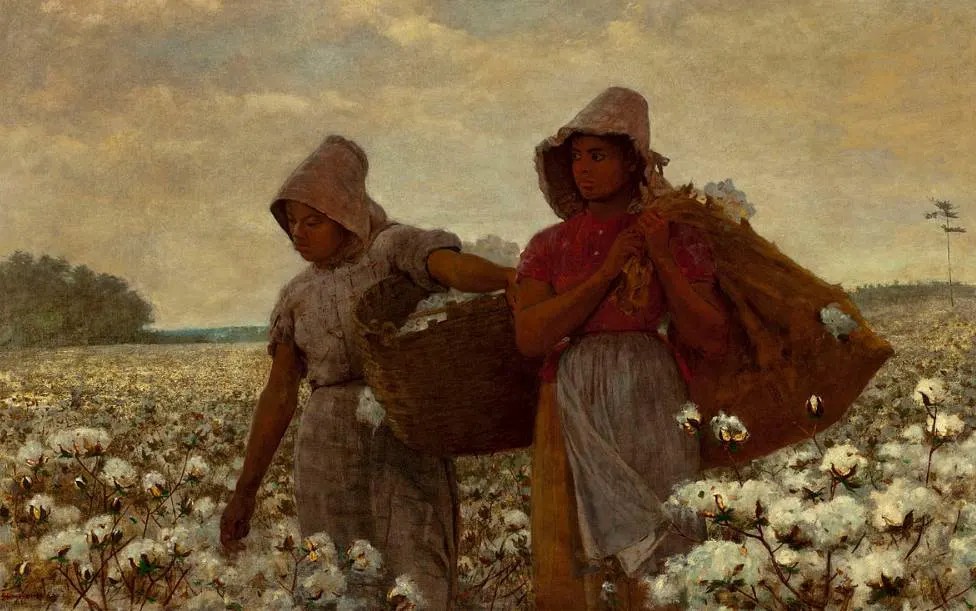
2. The Raising of Lazarus – Rembrandt van Rijn
- Date created: 1630-1632
- Dimensions: 96.4 x 81.3 centimeters (37.9 x 32 inches)
The Raising of Lazarus is one of the many masterpieces by Rembrandt, the Dutch master of the Baroque era who has an extremely varied oeuvre. This painting depicts the Raising of Lazarus from the dead by Jesus Christ as told in the Gospel of John.
Rembrandt van Rijn (1606-1669) perfectly captured the shocking moment that Lazarus crawled out of his grave after 4 days of presumably being dead. It’s one of the earlier paintings by the artist, completed while the Baroque artist was still living in his native Leiden.
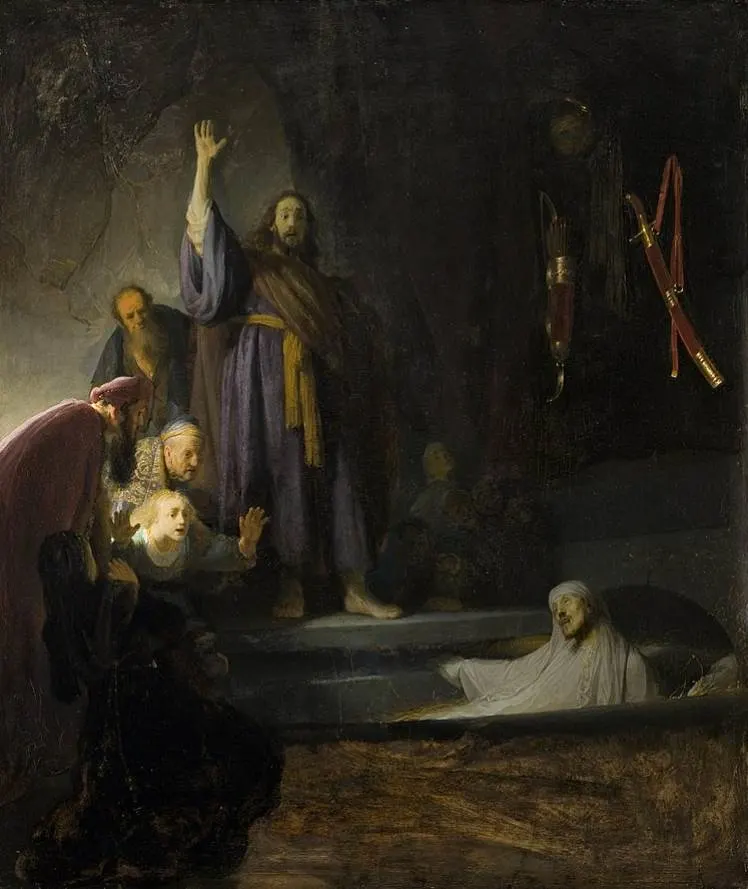
3. Portrait of Sebastià Junyer Vidal – Pablo Picasso
- Date created: 1903
- Dimensions: 126.36 x 93.98 centimeters (49.75 x 37 inches)
The Portrait of Sebastià Junyer Vidal depicts a close friend of Pablo Picasso (1881-1973), the Spanish artist who became one of the most famous artists in history. Vidal was a man who often accompanied the young artist while he was moving between France and Spain.
This period in the first couple of years of the 20th century is referred to as the artist’s “Blue Period. Picasso’s paintings during this period are characterized by a blue and grey hue that resonated with his struggles as an aspiring artist at the time.
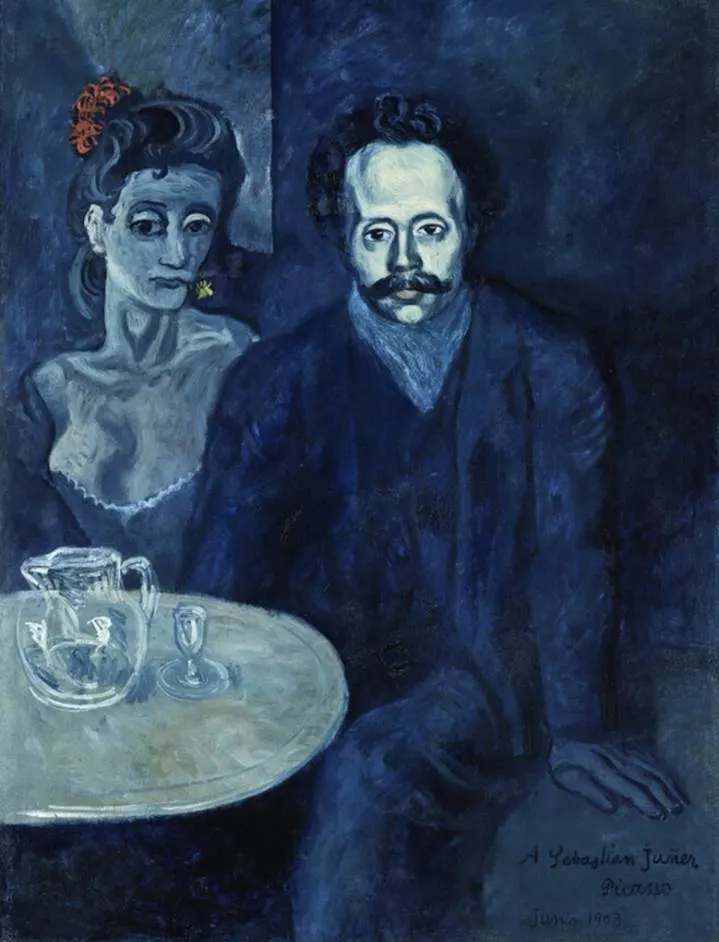
4. Magdalene with the Smoking Flame – Georges de La Tour
- Date created: 1640
- Dimensions: 117 × 91.76 centimeters (46.06 × 36.12 inches)
Magdalene with the Smoking Flame is a distinctive painting by the French artist of the Baroque era Georges de La Tour (1593-1652). He was a devout Catholic who often depicted religious figures in the typical chiaroscuro style that was made popular by Caravaggio (1571-1610).
The painting depicts Mary Magdalene as she is sitting near a lit candle in a dark room. She was a popular subject in religious paintings of the 17th century and De la Tour often depicted her. A similar painting by the artist as the one at the LACMA can be found in the collection of the Louvre in Paris.
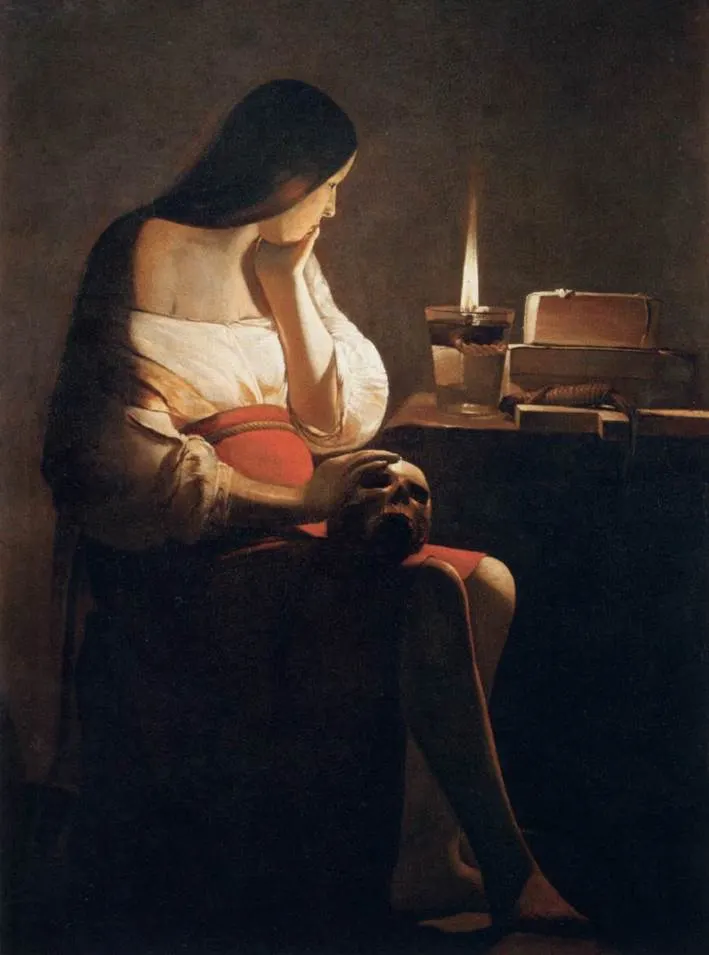
5. Still Life with Cherries and Peaches – Paul Cézanne
- Date created: 1885-1887
- Dimensions: 50.1 x: 60.9 centimeters (19.7 x 24 inches)
Still Life with Cherries and Peaches is a still life painting by Cézanne (1839-1906). This French artist is considered to be one of the most important artists of the late 19th and early 20th centuries. His depiction of common subjects on a table might seem simple but ere highly influential.
Just like in his famous Basket of Apples, Paul Cézanne didn’t care about a realistic depiction of the fruit and other items. He was experimenting with geometric forms and different viewing angles. In this painting, the plate with cherries appears to be balanced in an impossible way.

6. Nympheas – Claude Monet
- Date created: 1897-1898
- Dimensions: 66.04 × 104.14 centimeters (26 × 41 inches)
Nympheas or “Water Lillies” is one of the most famous series of paintings by Claude Monet, the founding father of the Impressionist art movement. It consists of about 250 paintings that were produced in his residence in Giverny, the place where he lived during the final decades of his life.
The Impressionist artist developed his garden during this period of life and the pond full of water lilies was one of his favorite subjects. The size of these paintings ranges from medium-sized works such as the one at the LACMA and monumental paintings that cover entire walls such as those at the Musée de l’Orangerie in Paris and the MoMA in New York City.

7. Wrestlers – Thomas Eakins
- Date created: 1899
- Dimensions: 122.87 x 152.4 centimeters (48.37 x 60 inches)
Wrestlers is the name of three different artworks by Thomas Eakins (1844-1916), an American Realist painter. He is considered to be one of the most renowned American artists in history who produced hundreds of portraits of both family members and important people.
The finished version is part of the collection of the Los Angeles County Museum of Art and the museum also holds an oil sketch by the artist. An unfinished version of the main work is part of the collection of the Philadelphia Museum of Art. All works depict a wrestling match that took place at the former Quaker City Barge Club on Philadelphia’s historic Boathouse Row.
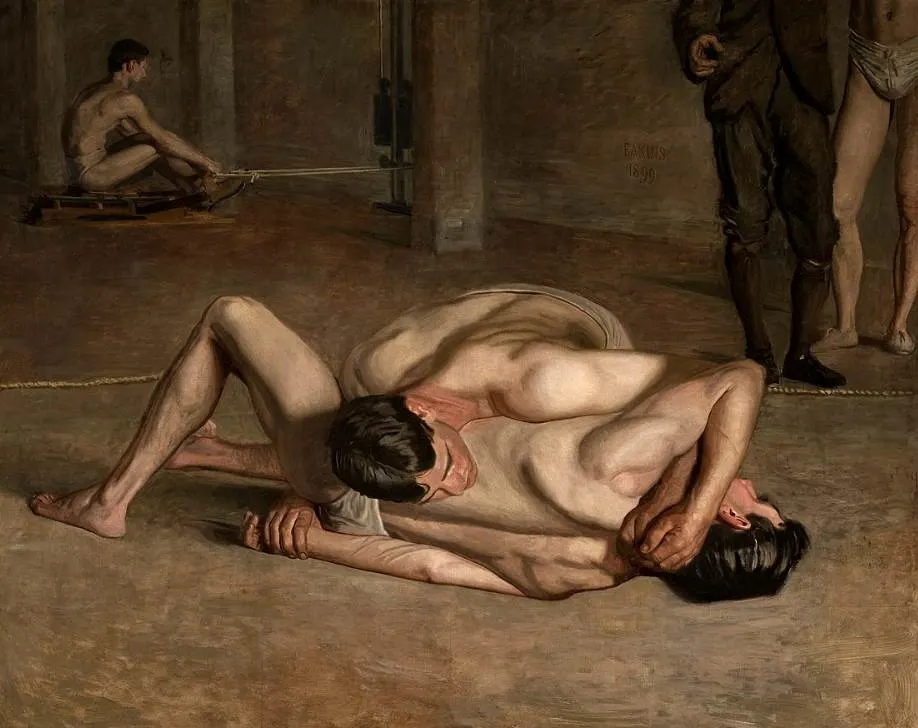
8. Mother About to Wash Her Sleepy Child – Mary Cassatt
- Date created: 1880
- Dimensions: 100.33 × 65.72 centimeters (39.5 × 25.87 inches)
Mother About to Wash Her Sleepy Child is an Impressionist painting by American artist Mary Cassatt (1844-1926). Cassatt pursued an artistic career at an early age and moved to Paris where she befriended Edgard Degas and the other famous Impressionist artists of the 19th century. She lived most of her adult life in France.
This painting depicts a common scene in the oeuvre of Cassatt, the subject of the mother and child. This painting is quite remarkable because it’s considered to be one of the first times she painted this subject. This notion makes it one of the most pivotal paintings of her career.
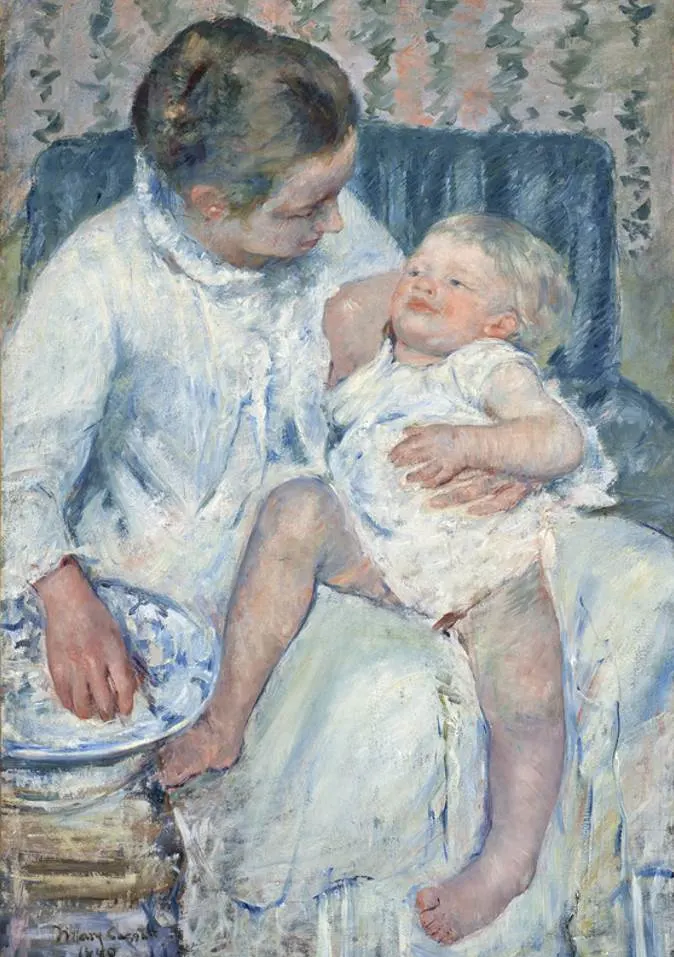
9. Mrs. Schuyler Burning Her Wheat Fields on the Approach of the British – Emanuel Leutze
- Date created: 1852
- Dimensions: 101.6 x 81.2 centimeters (32 x 40 inches)
Mrs. Schuyler Burning Her Wheat Fields on the Approach of the British is a painting by German-born American history painter Emanuel Leutze. He is world-famous for painting “Washington Crossing the Delaware” in 1851, the best-known work of the German artist.
He completed this painting shortly after he had returned to the United States from Düsseldorf in 1852. It depicts a scene from the American Revolutionary War in the 1770s and Leutze tried to capitalize on the heroism that made him a popular history painter just a year earlier.
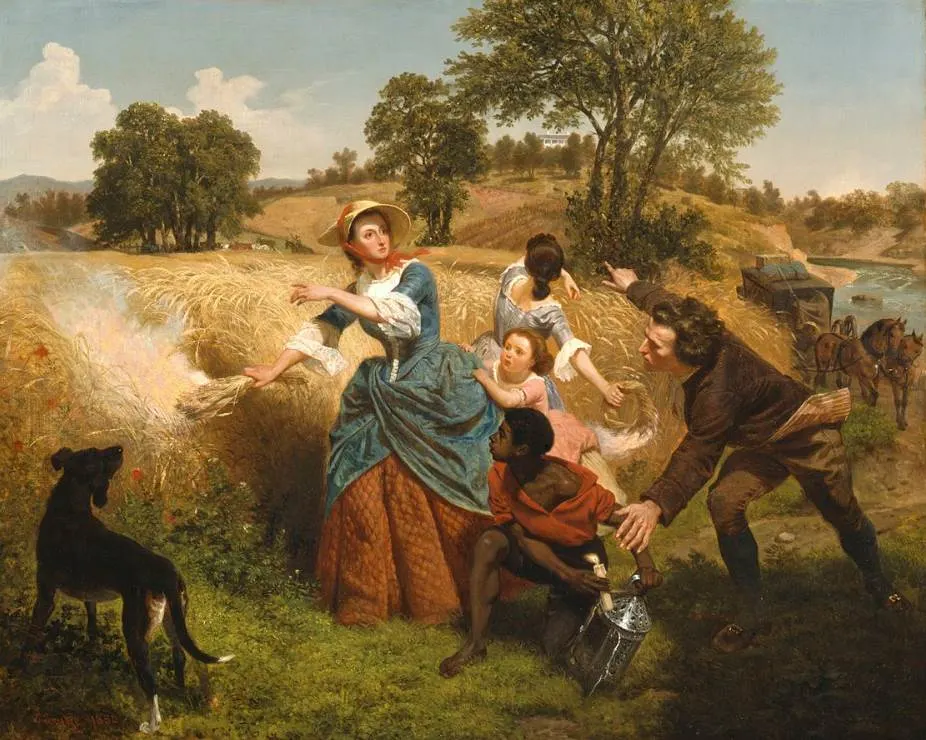
10. Cliff Dwellers – George Bellows
- Date created: 1913
- Dimensions: 102 × 106.8 centimeters (40.1 × 42 inches)
Cliff Dwellers is a painting by American Realist artist George Bellows (1882-1925). He became famous for his depictions of urban life in New York City and this painting can easily be described as one of his most distinctive works. It’s in line with the ideals of the Ashcan School, an American art movement in the early 20th century.
This painting depicts an urban landscape on a hot summer day. The chaotic scene is full of people as laundry hangs above their heads. Cliff Dwellers is believed to be an allegorical representation of the enormous growth in population in New York. Between 1870 and 1915, the city grew from 1.5 to over 5 million inhabitants.

11. The Treachery of Images
- Date created: 1929
- Dimensions: 60.33 × 81.12 centimeters (23.75 × 31.94 inches)
The Treachery of Images is a Surrealist painting by the famous Belgian artist René Magritte (1898-1967). The Surrealist artist often produced paintings that play mind games on the viewer, and this painting can be described as one of the best examples of that.
Ceci n’est pas une pipe translates to “This is not a pipe.” When Magritte was asked why he added these words below an image of what clearly is a pipe, he simply asked the people if they wanted to stuff his pipe. It’s impossible because it’s merely a representation of a real pipe.
